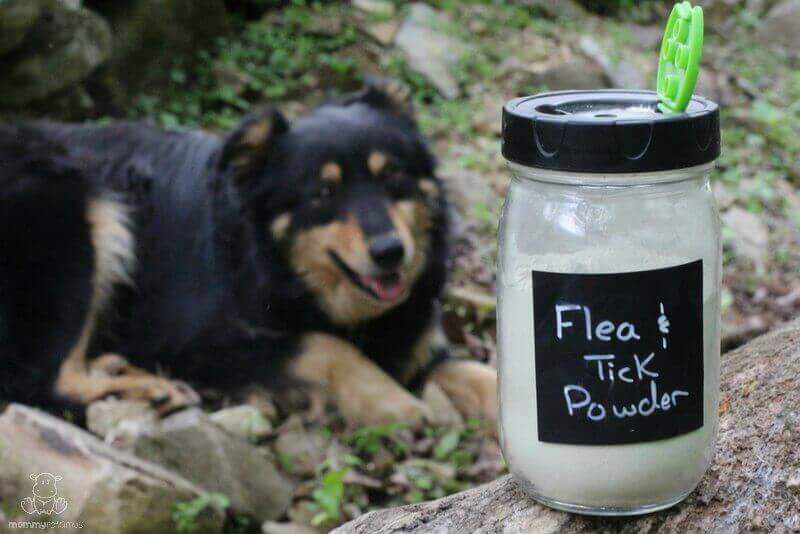
Natural Flea And Tick Powder Recipe For Dogs
Part-time egg thief and full-time protector, Duke is the best farm dog I’ve ever had. Okay, he’s the only farm dog I’ve ever had, but he’s loyal, patient with littles, and vigilant about keeping chickens and goats safe.
Because we live in a heavily wooded area, I apply this natural flea and tick powder to keep him safe and healthy . . . and also to guard my kids from exposure to fleas and ticks when they snuggle with him.
What’s in natural flea and tick powder?
Whipping up a batch of this powder is super simple. Here’s what you’ll need:
Ingredient # 1: Essential Oils
Some essential oils are considered helpful for repelling both ticks and fleas, while others are considered helpful for just one or the other. In the list below I’ve designated which dog-safe essential oils are considered best for each so that you can choose the oils that are aligned with your goals.
One quick note: Many of these oils are considered safe for children and can also be used to make homemade bug spray. I’ve included notes on which ones are and are not kid-safe so you can choose options that can be dual-purpose if you have little ones.
- Cedarwood Atlas (Cedrus atlantica) – Helpful for fleas. Chests made from cedarwood have been used for generations to store clothing while repelling insects such as moths. Cedarwood is also often used to repel fleas and mosquitos. Safe for use with children.
- Clary Sage (Salvia sclarea) – Helpful for fleas. In her wonderful book, Holistic Aromatherapy For Animals, Kristen Bell incorporates this oil into her flea-repellent essential oil blends. Safe for use with children.
- Citronella (Cymbopogon winterianus) – Helpful for ticks and fleas. If you search on the EPA’s guide to insect repellents, you’ll find that when you specifically search for repellents for ticks it lists three oils as active ingredients that can be selected – citronella is one. Can also be used to make homemade citronella candles. Safe for use with children.
- Geranium bourbon (Pelargonium x asperum) – Helpful for ticks. Can also be used to support skin repair and renewal, elasticity and firmness, and even skin tone. I use it in my hydrating skin serum recipe. Safe for use with children.
- Lavender (Lavandula augustifolia) – Helpful for fleas. Calming, helpful for soothing bug bites, sunburns, and other skin irritations. In a study on hairless mice, lavender was effective at repelling adult mosquitos. (source) I wouldn’t solely rely on lavender as a repellent, though. Safe for use with children.
- Lemon (Citrus limon) – Helpful for fleas. In Holistic Aromatherapy For Animals, Kristen Bell incorporates this oil into her flea-repellent essential oil blends. Can cause photosensitivity. Maximum recommended topical use is 2% (12 drops in two tablespoons carrier oil). Safe for use with children if used appropriately.
- Peppermint (Mentha piperita) – Helpful for fleas. In Holistic Aromatherapy For Animals, Kristen Bell incorporates this oil into her flea-repellent essential oil blends. According to Robert Tisserand, peppermint can be diffused with care around 3-6 year olds and applied topically at a concentration of 0.5% (2 drops in 4 teaspoons carrier oil). He clarified that “with care” means about two drops in the diffuser.
Note: Do not use essential oils with puppies under 10 weeks old.
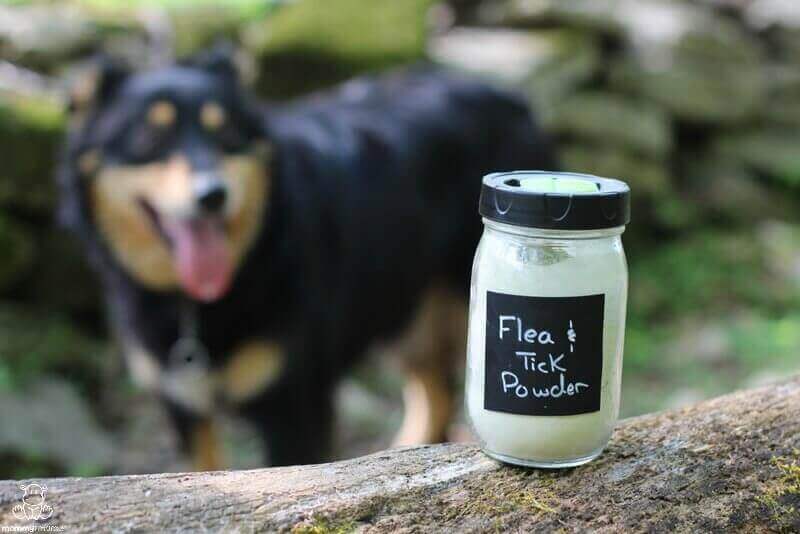
Ingredient #2: Diatomaceous Earth
Made from a type of fossilized phytoplankton called diatoms, food grade diatomaceous earth is used in a lot of DIY recipes – deodorant, tooth powder and scouring powder for example. Although it feels like fine baby powder to our skin, it’s very hard and works well as a gentle abrasive. When used as a flea and tick powder, it attaches to the protective waxy outer coating (exoskeleton) of bugs and absorbs or scrapes it away, causing them to dry out and die.
Safety note: Although food grade diatomaceous earth is safe for use with humans and pets, filter grade diatomaceous earth is not. That’s because it has been heated in order to change it’s structure from the harmless amorphous silica that makes up 98.99% of food grade DE to crystalline silica, which can be harmful if breathed in. Always, always use food grade diatomaceous earth. Here’s where to find it.
Ingredient #3: Neem Powder
You’re probably already familiar with one of the darlings of Ayurvedic medicine – turmeric – which can be used to support the immune system and even whiten your teeth.
Another revered plant in the Aurvedic tradition in the neem tree, which is sometimes called The Wonder Tree of India. It’s leaves have long been used as a natural bug repellent, which is why they’ve been incorporated into this recipe. I use organic neem powder which is made from the dried, ground leaves and is sold as a supplement.
Ingredient #4: Arrowroot Powder
In this recipe, arrowroot powder is used to dilute the other ingredients so that they are gentle enough for frequent topical use.
What To Buy If You Don’t Want To DIY
You can find a pre-made tick and flea powder that’s similar to mine here. It doesn’t contain essential oils, but you could add them if you’d like. The pre-made version contains a higher concentration of herbs so I would probably reduce the number of drops – maybe 15-20 drops per half cup.
This non-toxic tick and flea collar is another option to consider. Developed by veterinarians and dermatologists, it uses geranium, peppermint, cinnamon, lemongrass, clove, thyme, Eastern red cedar, rosemary, and citronella instead of conventional insecticides like midacloprid, flumethrin, pyrethrins, or tetrachlorvinphos.
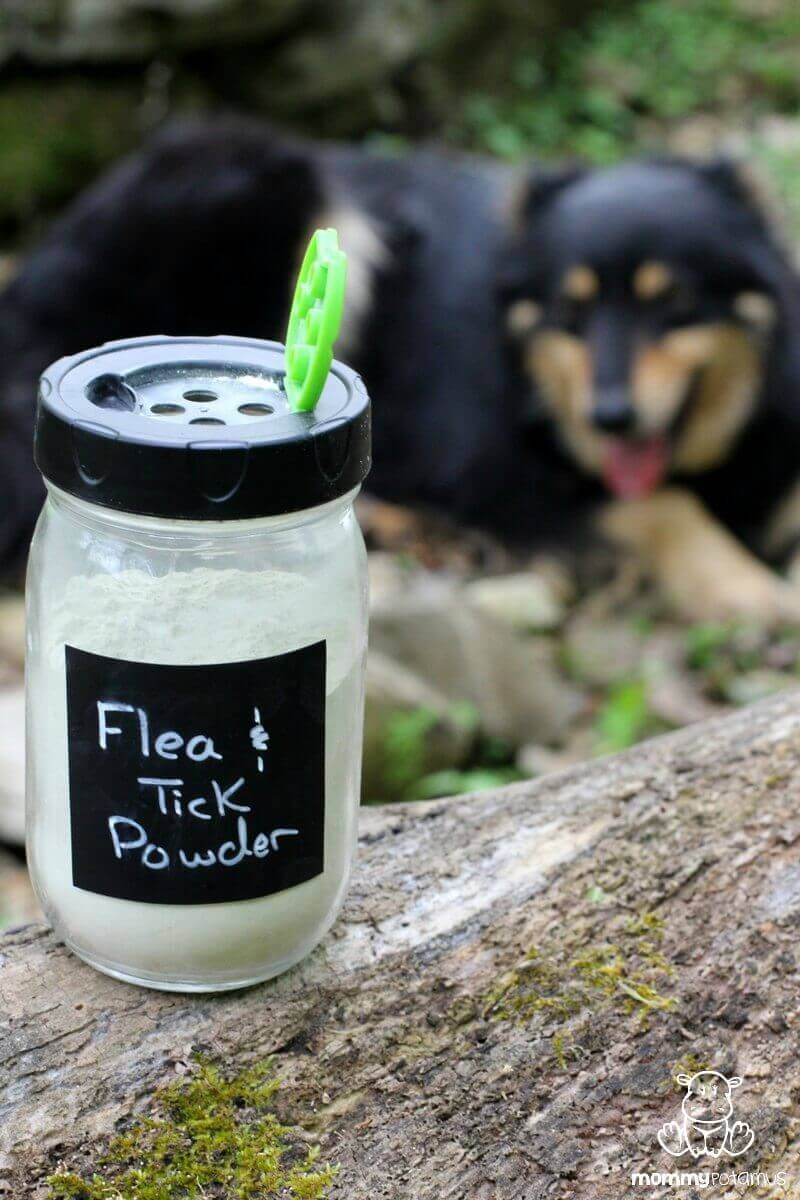
Homemade Flea & Tick Powder Recipe For Dogs
Ingredients
- ½ cup food grade diatomaceous earth
- ¼ cup neem powder
- ¼ cup arrowroot powder
- 90 drops of essential oil (See options below. I recommend using three oils and dividing the number of drops between them, which would be 30 drops each.)
Essential Oil Options
- Cedarwood Atlas (Cedrus atlantica) for fleas
- Clary Sage (Salvia sclarea) for fleas
- Citronella (Cymbopogon winterianus) for ticks and fleas
- Geranium bourbon (Pelargonium x asperum) for ticks
- Lavender (Lavandula augustifolia) for fleas
- Lemon (Citrus limon) for fleas
- Peppermint (Mentha piperita)
Instructions
To Make Homemade Tick & Flea Powder
- Add food grade diatomaceous earth, neem powder, arrowroot powder and essential oils to a jar.
- Using a fork, stir slowly until the essential oils and powders are well-combined.
To Use Homemade Tick & Flea Powder
- You’ll want to be outside. Using the shaker, shake a small amount of powder into the palm of your hand.
- Rake your fingers against the grain through your pet's fur, making sure to maintain contact with the skin as you rub your fingers through the fur. For most dogs, you’ll be able to see where you’ve rubbed in the powder as some slight dusting will remain on the outer coat.
- Repeat with additional powder shaken into the palm and raked into the fur until the back, torso, legs, tail, and neck have been covered. Be careful around the eyes and mouth because the powder can irritate the mucosa.
- Between applications I also spritz our dogs outer coat with this tick repellent recipe as needed – the dilution is within the safe range for dogs and all the essential oils are considered dog-safe as well.
Frequently Asked Questions
Cats and essential oils don’t really mix, but if you leave out the essential oils this blend would be fine. However, it might be better to go with this pre-made powder that incorporates a higher concentration of whole herbs than my recipe calls for.
I don’t think it’s available anymore but this one is similar. I like that it has a lid that will help retain the freshness of the essential oils found in neem (plus any you decide to add).
Non-GMO cornstarch or tapioca starch would work.
Want more research-backed natural remedies?
No problem, I’ve created a free ebook for you – Kitchen Apothecary: 25+ Natural Remedies Using Ingredients From Your Pantry – as a gift for signing up for my newsletter. You’ll also get updates when I post about safe essential oils for pregnant/breastfeeding mamas, exclusive gifts and coupons (I was able to give away a jar of free coconut oil to anyone who wanted it recently!), plus other goodies.
Sign up using the form below.
Sources:
1. Science Daily (2001) Catnip Repels Mosquitoes More Effectively Than DEET
2. Choi, Won-Sik (2002) Repellent activities of essential oils and monoterpenes against Culex pipiens pallens
3. American College of Healthcare Sciences (2017) Green Cleaning: 10 Essential Oils that Naturally Repel Insects
4. Bell, Kristen Leigh (2002) Holistic Aromatherapy For Animals
5. Using Essential Oils Safely. Is it Safe to Use Essential Oils With Dogs?
6. Animal Wellness Magazine (2016) Catnip is good for dogs too!
7. Animal Wellness Magazine (2016) Essential oils: natural insect repellent for dogs

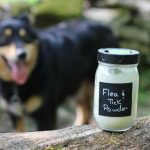
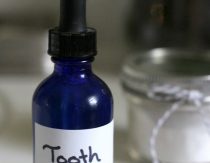

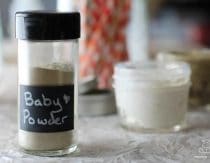

This is wonderful! I’ll give it a try on our two Scotch Collies. It might be a challenge to get it to the skin on our male; he has quite the kingly robe of fur. 😀
This dog looks like my dog’s twin!!! Cute!
Do you think this would work on rabbits?
Can you make your coconut oil soap for doggos. I’ve seen one online with oats, but u don’t know what superfat level is safe for them
I love you, Mommypotamus!
This is SOOO awesome! Honestly, I usually stick to just plain DE, but I never really considered that it could be abrasive to the skin! Sometimes, I have found a tick or two on my husky especially – so maybe adding in some NEEM powder will give it that kick I need. Adding some EOs is not a bad idea with my stinky guys haha – thanks for sharing <3
Can I use this on my cats as well?
There are many oils that are dangerous specifically to cats. I would check each of the oils… tea tree and a few others can even be deadly (their livers can’t handle it or something along those lines).
Can’t wait to try this on my furbaby so thank you so much! Where did you purchase your jar please or what is that kind of jar called?
How frequently do you apply?
About once a week 🙂
Hello! I have neem oil, will that be ok ?
Wow this seems so familiar!
Essential oils are not necessarily bad for cats. There’s a lot of bad hype on the web right now in regard to that. There are several great reference books about oils + pets that teach you how to use them properly around all sorts of animals….lest any of your readers freak out. Lol. For those who are reading this and use YL or DoTerra oils, please know that 90 drops of EO is WAY too much. Those two brands are much more intense and truly therapeutic. You need about 1/3 that much. If that.
Other more generic brands, in part because of the distillation methods employed by those companies’ third party distillers, are “weaker” in intensity, so you need more of it. Just FYI.
I think im in love with you hun!! Bahahaha you are a genius!! Love your blog, your diy and the way you say things!! Please keep doing this, i learn so much from you!!
Can this be used on a pregnant dog?
Trying too find the shaker top for your mason jar, and on Amazon they only sell the mini-jar size. Could you share your source? IT’s probably important to have larger holes for this job.
Hey Heather! This is the one I bought.
We ALWAYS opt for natural! The link for the pre-made powder you mention doesn’t come up for me.
Bummer that ads for toxic Bayer and Purina products are showing up on your post :/
Healing blessings…
Hi Ann, thanks for letting me know about the links not working. I’ll see if I can find the product and re-link to it.
In terms of the ads, they’re generated by an ad service based on the subject matter of the post. There are some things that I specifically have disallowed on my site – junk food and pharmaceuticals are two of them – but sometimes things slip through. Thanks for letting me know about your experience. I’ll do my best to keep them filtered out.
What can I use in place of arrowroot?
Such great ideas, and helpful. Great informative information, Thank you so much. Namaste Laura
Unless I missed it, I don’t see how often this should be applied…??
Please help.
Thanks!
Kimberley Jackman
I’m looking for a DIY dog dietary supplement to repel fleas tics…
The tablets on the market are very EXPENSIVE
I love your stuff!!!!